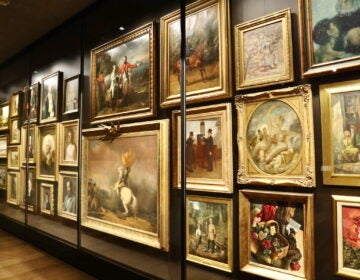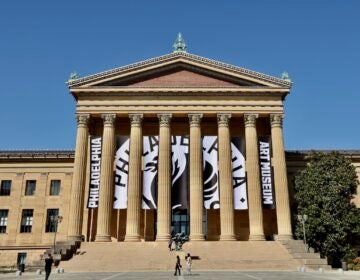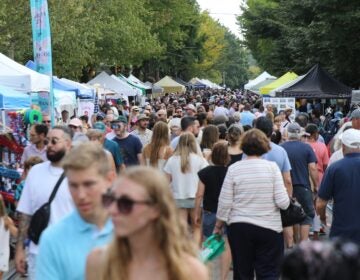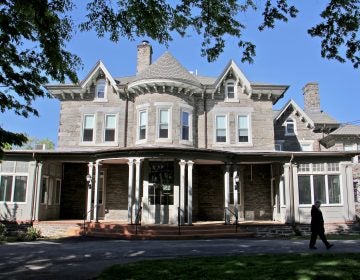An ‘exuberantly eclectic’ new building is set to open at Chestnut Hill’s Woodmere Museum
The new Maguire Hall is a 173-year-old industrialist’s mansion converted into a showcase of Philadelphia artists.
From Philly and the Pa. suburbs to South Jersey and Delaware, what would you like WHYY News to cover? Let us know!
This weekend, the Woodmere Museum in Chestnut Hill will open its second location, a 19th-century mansion two blocks away from its main building on Germantown Avenue.
The 17,000-square-foot Maguire Hall, named after the now-deceased philanthropist Frances Maguire, gives the museum 14 additional galleries to display more than 500 works of art — more than doubling its exhibition capacity.
“All of a sudden, people can know that Woodmere’s collection is one of the great collections of American art,” said CEO and director William Valerio. “I believe it’s going to be revelatory, really change the way Woodmere is able to participate in the broader conversation of American art museums.”
The collection begins before a visitor enters the building. On the spacious front lawn of Maguire Hall is Philadelphia-area artist Steve Tobin’s “Praha,” a cluster of steel monoliths resembling tombstones as a meditation on the Old Jewish Cemetery in Prague.
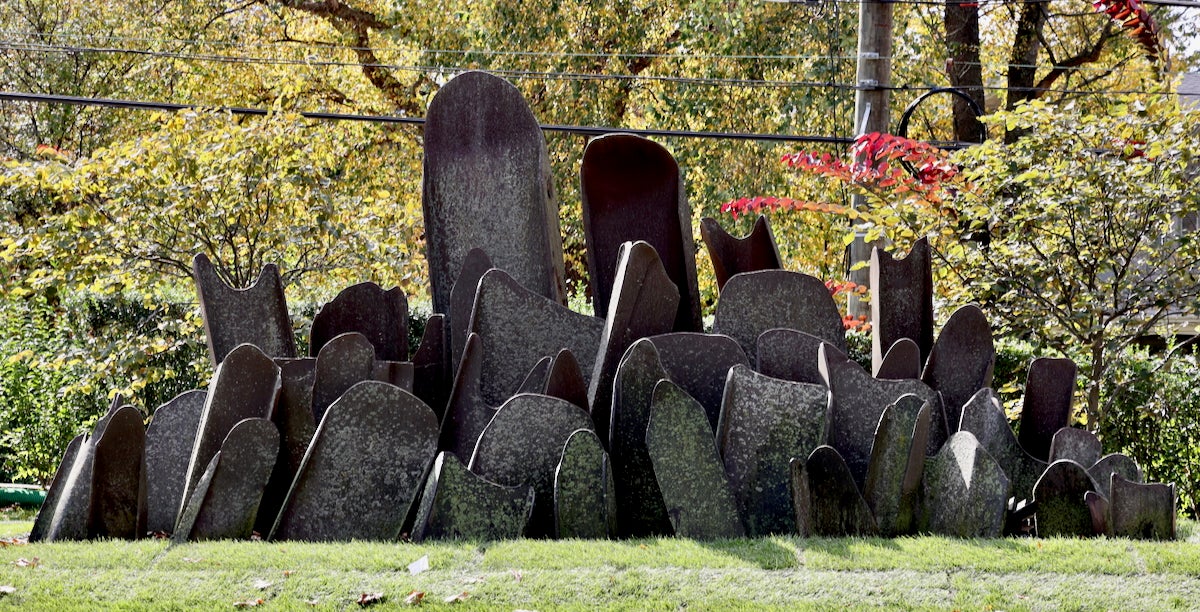

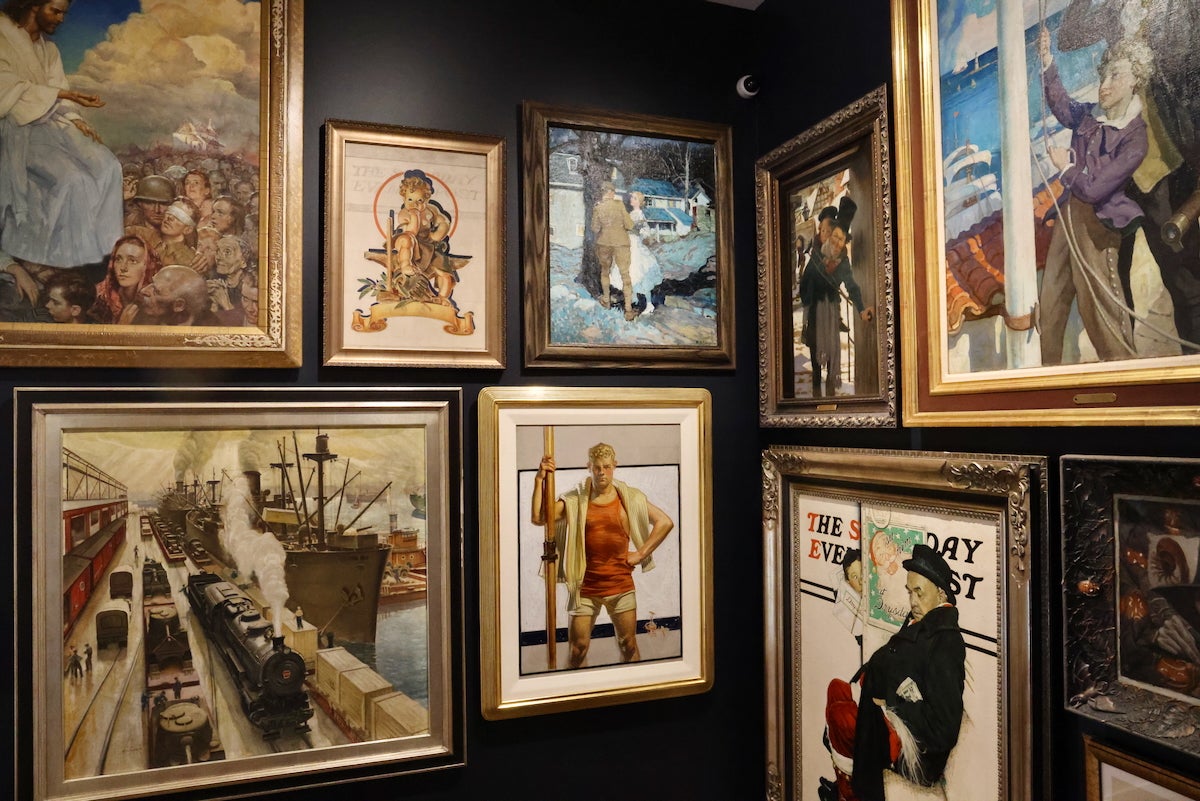
Nearby, another sculpture has a lighter tone: A fountain in what used to be the house’s carriage turnaround has a bronze nude holding a grape bunch as its centerpiece. “Sweet Grapes” was made by the early-20th-century artist Harriet Frishmuth, a member of a group of women artists known as the Philadelphia Ten.
“One of the great artists of the Gilded Age. Studied with Rodin in Paris, came back to the United States, and was one of the great sculptors of her time,” Valerio said. “When we knew we were doing this project, we somehow had to build the right kind of setting for her.”
What links the two sculptures are their Philadelphia provenance. Woodmere is focused on local artists, amassing about 11,000 works over its 85-year history. Most of the outdoor sculptures were acquired during the renovation of Maguire Hall, including three large-scale works by Tobin.
A house steeped in history
What is now Maguire Hall was built in 1852 as a country retreat for Maria Louisa Farr, wife of Philadelphia industrialist William Henry Trotter. It was later significantly expanded by Alfred Craven Harrison, whose family made a fortune in sugar. Harrison hired local artisans to craft luxurious architectural details into his mansion.
In 1924, the building became Saint Michael’s Hall, used by the Sisters of Saint Joseph as a girls’ school, a college dormitory and ultimately a residence for nuns. The Sisters sold the building to the Woodmere Museum in 2021.
A sunroom built by the Sisters has been torn out to restore the house’s wraparound porch, its ipe wood decking facing west overlooking the Wissahickon Creek valley with a view of the hills of Whitemarsh in the distance.

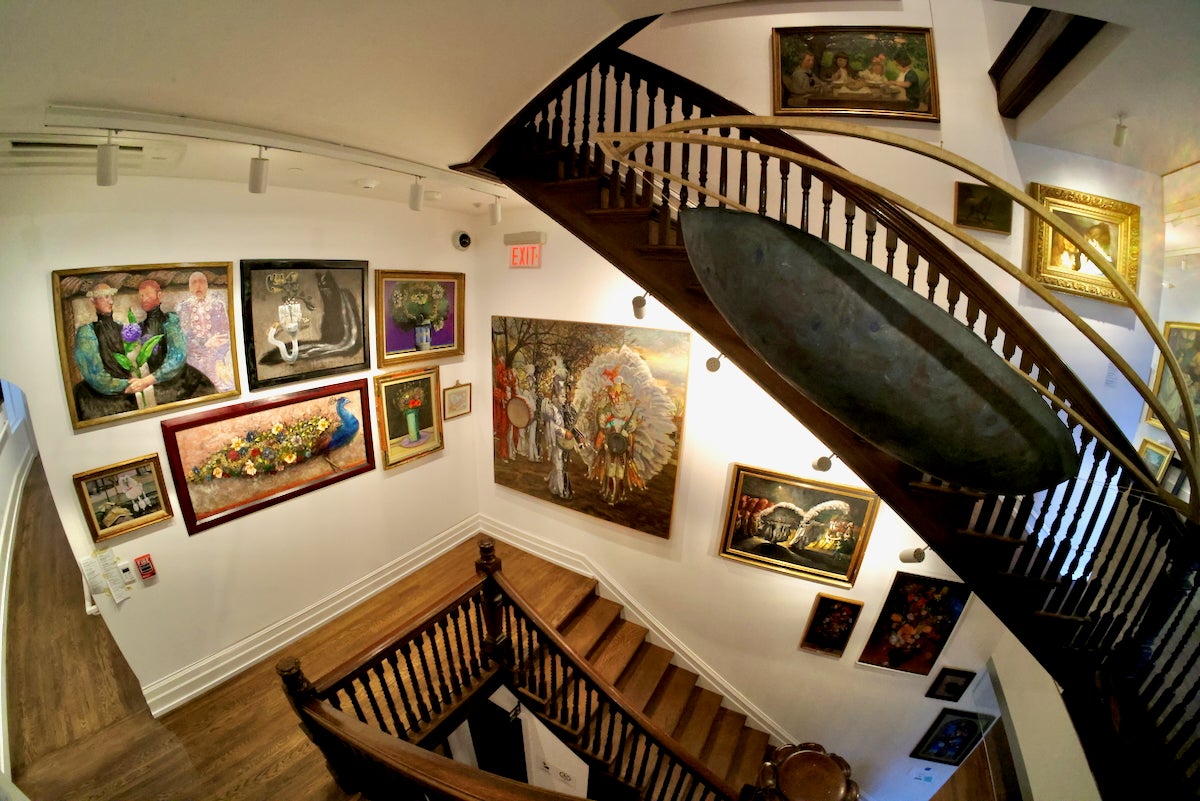

Maguire Hall sits on 4 acres of land. Valerio said Woodmere’s founder, Charles Knox Smith, believed the views outside went hand in hand with the art inside.
“He wanted visitors from the gritty town from Center City, Philadelphia, to get on their horses and carriages, come up Lincoln Drive back when it was a gravel path, experience nature and approach art with the calm that nature brings,” he said. “That, together with the experience of art, would be a path to spiritual wellness. We still believe that today.”
Packed floor to ceiling with art
Immediately upon entering the building, the density of artwork is formidable and unrestrained. Even before reaching the ticketing desk, the paintings are already covering nearly every square foot of wall space. That salon-style density continues throughout the building in a nod to Smith, who opened his collection to guests in 1913 with artwork displayed in a similar fashion.
“This is a Victorian house. The art that was here would have been hung from floor to ceiling,” Valerio said. “What we wanted to create was the experience of a historic house of that time and the way art would have been shown.”
In a new book about the history of the Woodmere Museum, author Hilary Jay describes Smith’s personal taste in art as “exuberantly eclectic,” which applies equally to the Woodmere’s new galleries.
Anachronistic to the Victorian setting but true to Woodmere’s mission, many of the Art Deco chandeliers and lighting sconces were salvaged from the iconic Boyd movie palace in Center City, which was demolished in 2015.
“Just as we were getting started on this building, the Friends of the Boyd were looking for homes for the amazing fixtures that they were able to salvage from the Boyd Theatre,” Valerio said. “It’s an absolutely spectacular, glittering Art Deco chandelier that fills the space with light and sparkle and also connects to one of the great cultural anchors of the city that’s unfortunately no longer with us.”
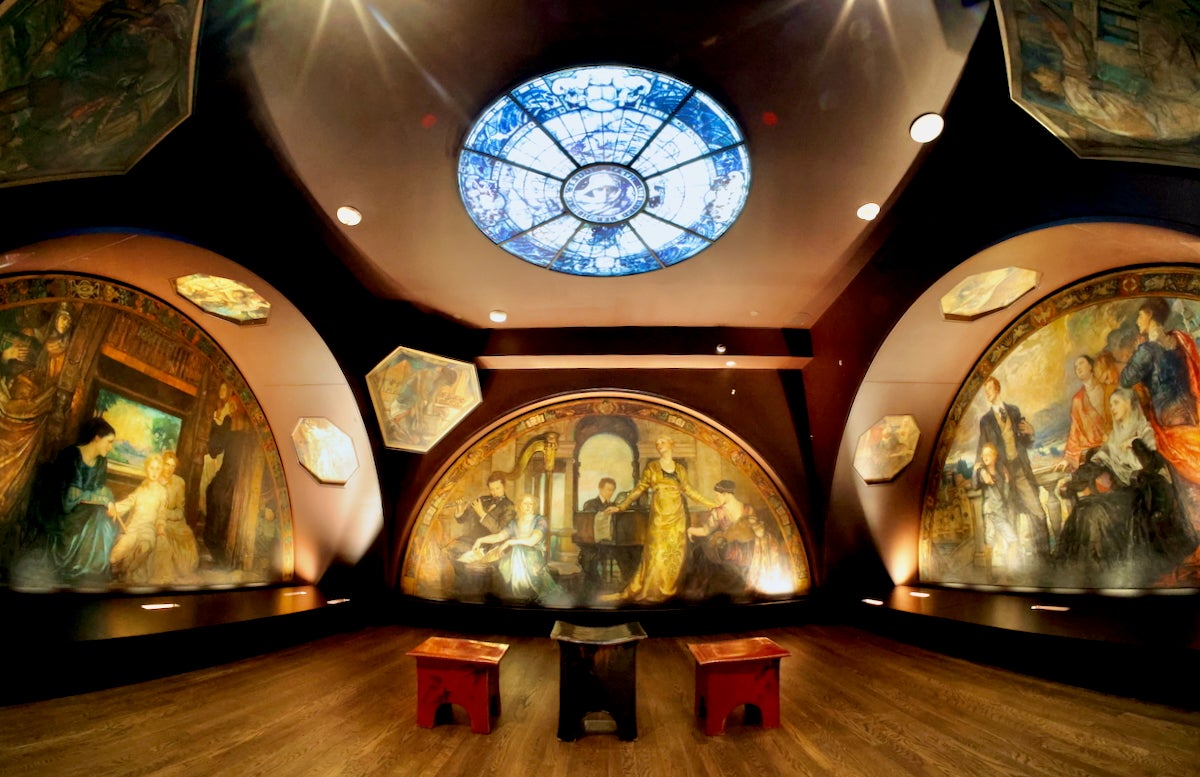


Some of the artwork on display would be befitting a Victorian mansion, such as a series of murals called “House of Wisdom” that Violet Oakley created for the Center City home of financier Charlton Yarnall in 1908. Oakley is of particular interest to the Woodmere, which has over 2,000 pieces by her.
But by far the artwork on view is modern and contemporary, including Tom Palmore’s giant portrait of a gorilla from the Philadelphia Zoo, Bamboo; a figure surrounded by snakes and African tribal dancers by Barbara Bullock; Elizabeth Osborne’s soft and moody still lifes; the abstraction of Arthur Carles; and the postmodernist tableau scenes of Larry Day.
The additional exhibition space has allowed the Woodmere to expand its collection into jewelry. The basement level of Maguire Hall has glass cases of artfully designed rings, necklaces, broaches and bracelets, including pieces by Philadelphia designers Henri David, Doug Bucci and Sharon Church.
Philadelphia stories
The mostly white-walled galleries in the house are broken up by a room on the second floor papered in dark purple. During renovation work, a small scrap of wallpaper was found. It was too small to determine the pattern, but the Woodmere interpreted what it might be and had it fabricated to cover the room.
Over the wallpaper are dozens of large-scale works by painters like Daniel Garber, Walter Schofield and Edward Redfield, all associated with Pennsylvania impressionism in Bucks County, even though Schofield never lived there.
“This is very much an encyclopedia of the impressionist artists of Philadelphia,” Valerio said. “I don’t call them Pennsylvania impressionists because in my mind they’re all Philadelphia-based.”


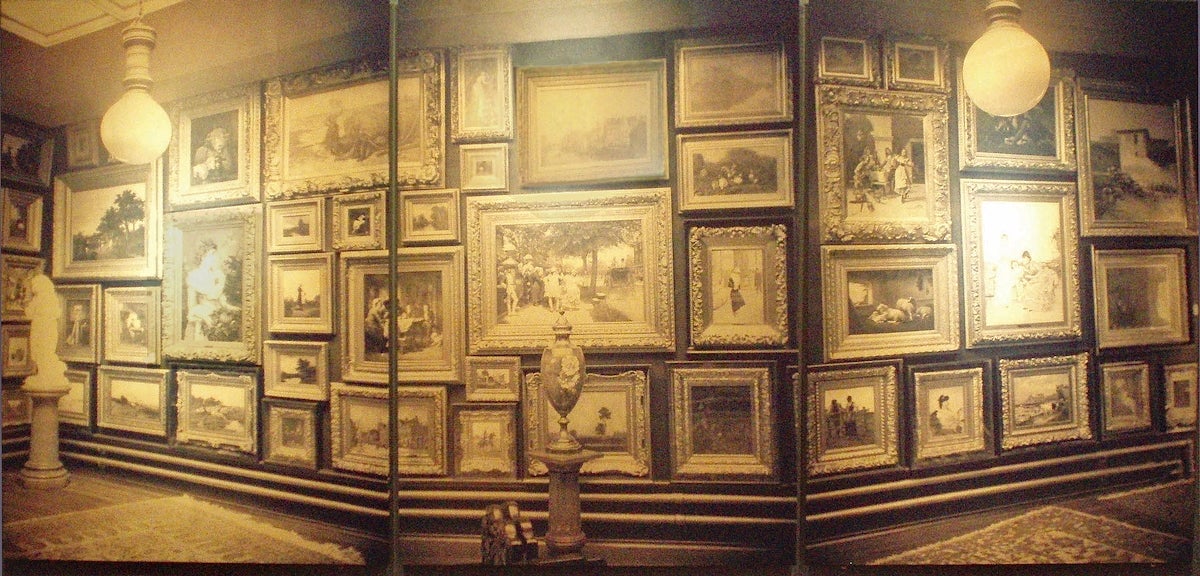
Valerio said artwork will rotate through Maguire’s 14 galleries, but some items will likely hang around for a long time, such as “Wissahickon in Winter,” a snowy landscape by Schofield.
“It’s so connected to this community,” he said. “The Wissahickon was a paper mill creek that was very polluted. He watched as many of the great families of Philadelphia, including the Woodmere family, purchased these paper mills simply to demolish them in order to clean up the Wissahickon.”
“Philadelphia artists are storytellers,” he said. “That’s a painting that I want always to be on view.”

Saturdays just got more interesting.
WHYY is your source for fact-based, in-depth journalism and information. As a nonprofit organization, we rely on financial support from readers like you. Please give today.




